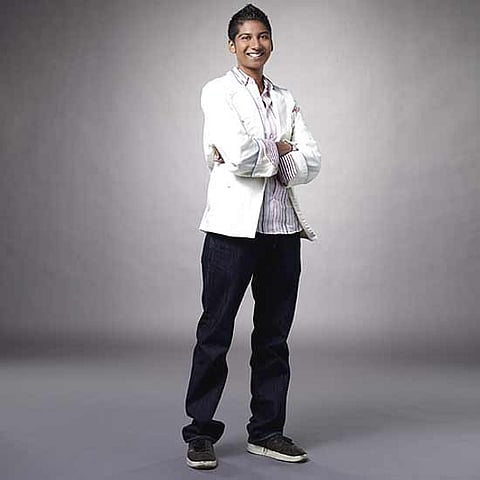Where Asok Comes To The Party
Second generation Indian Americans are making a mark in varied careers

“Indian food speaks to me most in my cooking.”
Mistry’s flirtation with food began in the late ’90s, when she and her partner would host lavish multi-course dinners at their home in San Francisco. Her cuisine was an instant hit, prompting friends to encourage her to join cooking school. An opportunity presented itself when her partner got a job in London. Mistry enrolled in Le Cordon Bleu cooking school. “It was kind of like an a-ha moment,” she said. Growing up, she never much cared for Indian food. Now, she admits, she loves it. “It speaks to me most in my cooking,” she says.

36, Doctor, George Washington University Hospital
“We felt that there might be a real opportunity if mobile phone images could be used for acute wounds care.”

“South Asians are seeing the benefits of making exercise a priority.”
Incidentally, Masala Bhangra was voted among the top 50 workouts in America by Shape magazine. Jain believes the workout owes its success to the bhangra music and energy of her classes. “People love to learn something new about Indian culture and Masala Bhangra brings that out in people,” she says. The workout has also been instrumental in taking a small part of Indian culture to the West. “Besides being a terrific way to get fit, one has to understand a little bit of Indian culture to benefit completely,” Jain says. She’s now taken Masala Bhangra to Japan, Italy, Sweden, Kuwait, Bahrain, Belgium and Australia. Jain oversees every aspect of the brand, including selection and training of instructors.

Born in New Delhi, Kundra’s family moved to Tanzania when he was a year old and then to Gaithersburg, Maryland, when he was 11. One of his earliest memories in America, according to a profile in the Washington Post, was of seeing a dog food commercial on TV. “I was shocked,” he says. “It was mind-boggling to me that people could afford to feed their dogs!” Kundra’s Indian influences are obvious—he counts Sholay among his favourite movies and Mahatma Gandhi as a role model.

38, Governor of South Carolina

37 Dean of religious life, University of Southern California
“Trying to live my passion brought me to an unusual path.”
Soni confesses that he didn’t feel entirely American growing up in the US. And when he went to India he didn’t feel entirely Indian. Still, he’s now got to a point where he is comfortable embracing both his Indianness as well as his Americanness. “I think having a hybrid identity is extremely beneficial and advantageous, whereas growing up with that hybrid identity was a cause for anxiety and confusion,” he explains.

40, Deejay, musician and entrepreneur
She acknowledges that being an artist is not easy. “There is no clear path and you have to make your own way. A lot of it depends on your talent, who you meet on the way,” Rekha says. Despite the increased exposure of Americans to Indian culture, she doesn’t believe there is a deep understanding of it. “If you dig deep, I don’t think people necessarily know what bhangra means. It is a term that has become ubiquitous on some levels,” she says. That’s why she teaches a deejay history, culture and technique class at New York University. “Teaching feeds a whole other side of my brain...I enjoy it.”

36, Founder of Rx Democracy!
“Doctors overemphasise the biomedical at the expense of understanding the biosocial.”

38, Administrator, US Agency for International Development

32, Professional Staff Member (South Asia), House Committee on Foreign Affairs
“It was a unique situation, to be Indian-American amongst most who were not.”

36, Co-founder, Restaurant Opportunities Centre-United
“My parents are immigrants from India, so I felt strongly about the cause of immigrant workers.”

29, Columnist, author
“If you want only good reviews, write a loving card to your mother and ask for her appraisal.”
Giridharadas is the author of India Calling, published earlier this year. He says his relationship with India has allowed him to have a foot in another world and, as a writer, provided him access to “so much more of the human experience”. Anand’s book sparked a debate in India over who is qualified to write about the country. That experience has not soured his relationship with the country, though. “If you’re not attracting criticism, and pungent, thoughtful criticism, you’re probably not saying anything worth saying,” he says. Anand now writes a biweekly newspaper column in the NYT and contributes to the New York Times Magazine. He is also working on a second book.
Tags